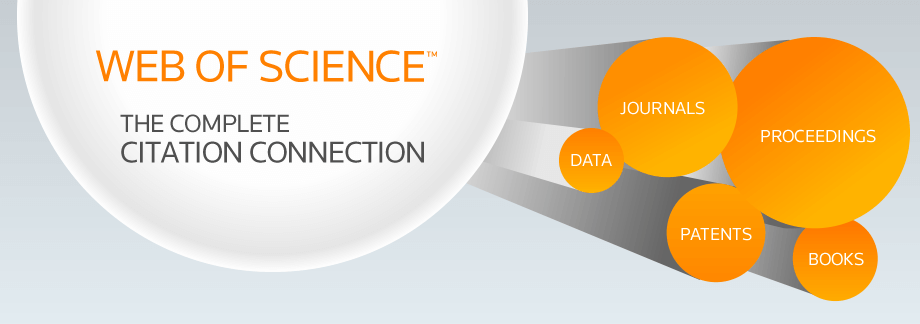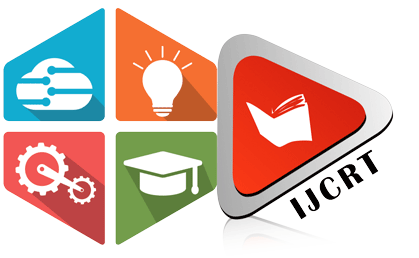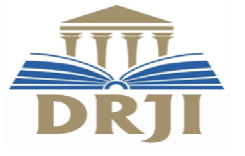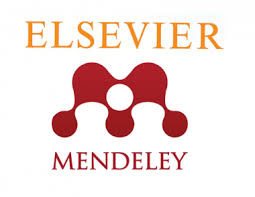INTERNATIONAL JOURNAL OF CREATIVE RESEARCH THOUGHTS - IJCRT (IJCRT.ORG)
International Peer Reviewed & Refereed Journals, Open Access Journal
IJCRT Peer-Reviewed (Refereed) Journal as Per New UGC Rules.
ISSN Approved Journal No: 2320-2882 | Impact factor: 7.97 | ESTD Year: 2013
Call For Paper - Volume 13 | Issue 11 | Month- November 2025
Scholarly open access journals, Peer-reviewed, and Refereed Journals, Impact factor 7.97 (Calculate by google scholar and Semantic Scholar | AI-Powered Research Tool) , Multidisciplinary, Monthly, Indexing in all major database & Metadata, Citation Generator, Digital Object Identifier(CrossRef DOI)
Contact Us Click Here
WhatsApp Contact Click Here
Volume 12 | Issue 5
| IJCRT Journal front page | IJCRT Journal Back Page |
Paper Title: EXAMINE THE IMPACT OF DIFFERENT PARENTING STYLE ON CHILD'S EMOTIONAL AND COGNITIVE DEVELOPMENT
Publisher Journal Name: IJCRT
Your Paper Publication Details:
Published Paper ID: - IJCRT2405907
Register Paper ID - 259543
Title: EXAMINE THE IMPACT OF DIFFERENT PARENTING STYLE ON CHILD'S EMOTIONAL AND COGNITIVE DEVELOPMENT
Author Name(s): Ritika Tomar, Dr Rita Kumar
Publisher Journal name: IJCRT
Volume: 12
Issue: 5
Pages: i301-i321
Year: May 2024
Downloads: 159
Abstract
This abstract explores the influence of various parenting styles on a child's emotional and cognitive development. Parenting styles encompass a spectrum of approaches, including authoritarian, authoritative, permissive, and uninvolved. Each style varies in its levels of responsiveness and demandingness towards the child. Authoritarian parenting, characterized by strict rules and low responsiveness, often leads to emotional difficulties such as low self-esteem and anxiety, while hindering cognitive development by limiting exploration and independent thinking. Conversely, authoritative parenting, which balances clear expectations with warmth and support, fosters emotional well-being and promotes cognitive growth through encouragement of curiosity and problem-solving. Permissive parenting, marked by high responsiveness but low demandingness, may initially seem supportive but can result in issues like impulse control and academic challenges due to lack of structure. Uninvolved parenting, with low levels of both responsiveness and demandingness, can lead to emotional neglect and hinder cognitive development, resulting in academic and behavioral issues. Understanding these dynamics underscores the importance of promoting authoritative parenting practices to nurture positive parent-child relationships and foster optimal emotional and cognitive development in children.
Licence: creative commons attribution 4.0
License
Keywords
Parenting styles, Child development, Emotional development, Cognitive development, Authoritarian parenting, Authoritative parenting, Permissive parenting, Uninvolved parenting, Parent-child relationship.
License
Paper Title: SMART AGRICULTURE IRRIGATION SYSTEM AND WEATHER ANALYSIS BY USING IOT
Publisher Journal Name: IJCRT
Your Paper Publication Details:
Published Paper ID: - IJCRT2405906
Register Paper ID - 260610
Title: SMART AGRICULTURE IRRIGATION SYSTEM AND WEATHER ANALYSIS BY USING IOT
Author Name(s): Shweta Jadhav, Nilam Deshmukh, Sahil Kolelar, Rohan Sarger, Ass.Prof.S.L.Jadhav
Publisher Journal name: IJCRT
Volume: 12
Issue: 5
Pages: i294-i300
Year: May 2024
Downloads: 141
Abstract
An agricultural nation like India depends heavily on agriculture for its growth. Approximately 70% of people in India are farmers. Agriculture has always been done by hand. It is imperative that agriculture follow the global trend toward new technology and innovations. because people are moving from rural to urban areas Agriculture has challenges. Modern technology updates daily, and agriculture must keep up with these changes as well. Smart agriculture can benefit greatly from the use of IoT. Hence the paper aims at making agriculture smart using automation and IoT technologies. IOT based Agriculture monitoring system makes use of wireless sensor networks that collects data from different sensors deployed at various nodes and sends it through the wireless protocols. It includes the humidity sensor, temperature sensor, soil moisture sensor and water level sensor. The features of this project include an android application which shows the live information about the temperature, humidity, soil moisture, water level. Secondly it includes smart irrigation with smart control and intelligent decision making based on accurate real time field data. Thirdly an automatic weather control system which controls the humidity and temperature of the field (e.g. green house).
Licence: creative commons attribution 4.0
License
Keywords
Internet-of-Things (IoT), Smart Agriculture, Smart Irrigation, Weather Control, Automation
License
Paper Title: Real-Time Geospatial Analysis: A Web Application for Dynamic Polygon Area Calculation
Publisher Journal Name: IJCRT
Your Paper Publication Details:
Published Paper ID: - IJCRT2405905
Register Paper ID - 260981
Title: REAL-TIME GEOSPATIAL ANALYSIS: A WEB APPLICATION FOR DYNAMIC POLYGON AREA CALCULATION
Author Name(s): Prof. Rupali Kaldoke, Anjali Nanaware, Bhagyada Wagh, Arundhati Vaishnav
Publisher Journal name: IJCRT
Volume: 12
Issue: 5
Pages: i282-i293
Year: May 2024
Downloads: 140
Abstract
This paper presents the development of a web application that enables users to calculate the area of user-drawn polygons on a real-time interactive map. The application utilizes Leaflet, a popular JavaScript library for creating interactive maps, and Turf.js, a geospatial data analysis library. The paper discusses the functionalities of the application, the underlying libraries, the implementation details, and the considerations for real-time performance.
Licence: creative commons attribution 4.0
License
Keywords
Real-time area measurement, User-drawn polygons, Interactive maps, Leaflet, Turf.js, Web application development, Geospatial analysis
License
Paper Title: Investigating the thermal characteristics of a composite phase-change material made of nano-tubular TiO2 and paraffin for use in thermal energy storage applications
Publisher Journal Name: IJCRT
Your Paper Publication Details:
Published Paper ID: - IJCRT2405904
Register Paper ID - 261011
Title: INVESTIGATING THE THERMAL CHARACTERISTICS OF A COMPOSITE PHASE-CHANGE MATERIAL MADE OF NANO-TUBULAR TIO2 AND PARAFFIN FOR USE IN THERMAL ENERGY STORAGE APPLICATIONS
Author Name(s): Anitha Manisekaran, Ramalingam A, Meera C
Publisher Journal name: IJCRT
Volume: 12
Issue: 5
Pages: i269-i281
Year: May 2024
Downloads: 132
Abstract
In energy management systems, phase change materials (PCM) thermal energy storage (TES) is crucial. Due to its distinct thermal and physical characteristics, paraffin offers a wide range of uses as a PCM. This study is the first to synthesise nano titanium oxide in a tubular shape and in powder form. This paper investigates the properties of nanoparticle-enhanced phase change material (PCM) on solar still process and performance. Solar energy is a renewable energy source that can be utilized for different applications in day-to-day life. An effective method of storing thermal energy from solar is through the use of phase change materials PCMs with titanate. The future demand will be high and fresh water resources are getting depleted at a faster rate. Solar still is a very simple device for converting the available brackish water into potable water. The main drawback of passive type solar still is its lower efficiency and distillate output. The usage of NPCM enhances the still productivity especially after the sunset. The anatase sample obtained less intensive peak than rutile peak at approximate wavelength of 300 nm shown in UV spectrum. The bands around 734 cm-1 correspond to intrinsic stretching vibration of metal ion at the tetrahedral site. The formations of spindle like structure are shown in TEM image, sample gives the average diameter is 33 nm of TiO2 nanoparticles. The strong excitation peak centered at 298.96 nm indicates a violet emission band is occurred. Solar still with titanium oxide nanoparticles enhanced the yielded up to 4910 ml/m2/day. These results will benefit to the researcher can further investigate on solar power generation, water heating system, solar cookers, and solar still using NPCMs for commercial development.
Licence: creative commons attribution 4.0
License
Keywords
Phase change materials, Thermal energy storage, Paraffin, Nano-tubular zinc oxide
License
Paper Title: Research Paper On Carbon Market And Trading In Kyoto Protocol
Publisher Journal Name: IJCRT
Your Paper Publication Details:
Published Paper ID: - IJCRT2405903
Register Paper ID - 260830
Title: RESEARCH PAPER ON CARBON MARKET AND TRADING IN KYOTO PROTOCOL
Author Name(s): VASNI SAHU
Publisher Journal name: IJCRT
Volume: 12
Issue: 5
Pages: i243-i268
Year: May 2024
Downloads: 131
Abstract
The past eight years' experiences include fewer free allowances, better management of market-sensitive information, and a recognition that trading systems require adjustments that have implications for market participants and market confidence. Furthermore, the emerging international architecture includes separate emissions trading systems that serve different jurisdictions. Along with the carbon markets, these programs are supplemented by a variety of other types of policies. This is in stark contrast to the integrated global trading architecture envisioned by the Kyoto Protocol's designers 15 years ago, and it raises a slew of new questions. In this new architecture, jurisdictions with emissions trading must decide how, whether, and when to connect, with policymakers overseeing the process When linking with one another, policymakers in charge of carbon markets must consider how to measure the comparability of market efforts in comparison to a variety of other policy approaches. After five years of rapid growth, the total value of the global carbon market has plateaued at $142 billion. Due to a lack of regulatory clarity post-2012, the value of the primary Clean Development Mechanism (CDM) market fell by double digits for the third year in a row, finishing lower than it was in 2005, the first year of the Kyoto Protocol. The markets for Assigned Amount Units (AAU) and the United States Regional Greenhouse Gas Initiative (RGGI) also shrank. As these segments declined, the European Union Allowances (EUAs) market became more pronounced than ever, with the EU Emissions Trading Scheme (EU ETS) accounting for 97 percent of the carbon market, dwarfing the remaining segments... Carbon market growth came to a halt at an especially inconvenient time: 2010 was the hottest year on record, while emissions levels continued their seemingly inexorable rise. In the end, the year may be remembered most for the political opportunities that arose but did not materialize in the United States, Japan, Australia, and the Republic of Korea. While the international regulatory environment remains uncertain, national and local initiatives have picked up noticeably and may offer the potential to bridge the international regulatory gap collectively. These initiatives indicate that one way or another, solutions to the climate challenge will emerge.
Licence: creative commons attribution 4.0
License
Keywords
1. Indroduction of Carbon Market And Trading 2.Review of Literature 3. Management of Carbon Market and Trading In Kyoto Protocol 4.Research Methodology 5.Summary
License
Paper Title: Image Caption Generation
Publisher Journal Name: IJCRT
Your Paper Publication Details:
Published Paper ID: - IJCRT2405902
Register Paper ID - 256523
Title: IMAGE CAPTION GENERATION
Author Name(s): Prof. Kriti Sachdeva, Mrinal Pandit, Abhishek, Nikhil Patil
Publisher Journal name: IJCRT
Volume: 12
Issue: 5
Pages: i237-i242
Year: May 2024
Downloads: 163
Abstract
The Image Caption Generator's job is to give subtitles for the supplied photos. A natural language is created by extracting and transforming the semantic content of the image. Capturing entails a difficult procedure that combines picture processing and computer vision. People, animals, and things must all be recognized by the system, and relationships must be made between them.This paper aims to detect, recognize, and generate worthwhile captions for a given image using deep learning. A Regional Object Detector (RODe) is used for the detection, recognition, and generation of captions. The practice of creating textual descriptions of an image by utilizing computer vision and natural language processing methods is known as image captioning. For the newer models to perform better, we used deep learning methods for this purpose. But these models can't tell you which things in a picture are more essential than others, or they can't tell you why certain phrases were used in the captions.
Licence: creative commons attribution 4.0
License
Keywords
Deep learning, feature extraction, thresholding, image segment, image captioning
License
Paper Title: Eugenics: From Science Of Race (Biology) To Master Race (Ideology)
Publisher Journal Name: IJCRT
Your Paper Publication Details:
Published Paper ID: - IJCRT2405901
Register Paper ID - 260980
Title: EUGENICS: FROM SCIENCE OF RACE (BIOLOGY) TO MASTER RACE (IDEOLOGY)
Author Name(s): Mohd Arif
Publisher Journal name: IJCRT
Volume: 12
Issue: 5
Pages: i233-i236
Year: May 2024
Downloads: 145
Abstract
Eugenics is a set of beliefs and practices aimed at improving the genetic quality of a human population. It gained significant attention and support in the late 19th and early 20th centuries but has since been discredited due to its unethical applications and association with human rights abuses. The legacy of eugenics serves as a cautionary tale about the dangers of pseudoscience and it has been become the most controversial concept in history and literature. For some it has been the part of enlightenment while for others, it is nothing but indoctrination. It has been referred a science as well as a myth, a fact as well as a conspiracy theory. When we read the literature on Eugenics, we came to know that Knowledge which has always been treated as a virtue in Socratic sense or "a torch bearer of light" in various narratives, the same knowledge can also be used as a tool of human enslavement through propaganda, manipulation , surveillance and control , exploitation and scientific racism. In Eugenics, the knowledge of genetics and biology has been misused to justify racist policies, claiming certain groups are superior or inferior based on false scientific narratives. This has led to discrimination, forced sterilization and even genocide. Although the concept originates in scientific world, but later on it has wider social implications. So it is the combinations of both biology (DNA) as well as ideology (ISA- Ideological state apparatus a term used by Althuser).
Licence: creative commons attribution 4.0
License
Keywords
Genomics, Genetic Engineering, selective breeding, social Darwinism, Race hygiene, Bio -politics, Genetic determinism
License
Paper Title: Toxic Comment Classification
Publisher Journal Name: IJCRT
Your Paper Publication Details:
Published Paper ID: - IJCRT2405900
Register Paper ID - 260804
Title: TOXIC COMMENT CLASSIFICATION
Author Name(s): Rewati Kawale, Ishika Kahar, Jatin Bais, Adarsh Nimkar, Manish Dhoble
Publisher Journal name: IJCRT
Volume: 12
Issue: 5
Pages: i227-i232
Year: May 2024
Downloads: 147
Abstract
The advent of social media and online platforms has brought about an unprecedented surge in user-generated content. However, with the freedom of expression also comes the challenge of combating toxic behavior, such as hate speech, harassment, and offensive comments, which can significantly impact online discourse and community well-being. In response to this challenge, this study proposes a machine-learning approach for classifying toxic comments. The primary objective of this research is to develop an effective and efficient model for automatically identifying toxic comments within large volumes of user-generated content. Leveraging a diverse dataset of comments labeled with toxicity levels, various machine learning algorithms, including but not limited to logistic regression, support vector machines, and neural networks, are explored and compared for their performance in toxic comment classification.
Licence: creative commons attribution 4.0
License
Keywords
Toxic Comment Classification, Machine Learning, Natural Language Processing, Text Classification, Hate Speech Detection.
License
Paper Title: Formulation and Evaluation of Herbal Anti- Dandruff Shampoo from Bhringraj Splint
Publisher Journal Name: IJCRT
Your Paper Publication Details:
Published Paper ID: - IJCRT2405899
Register Paper ID - 260770
Title: FORMULATION AND EVALUATION OF HERBAL ANTI- DANDRUFF SHAMPOO FROM BHRINGRAJ SPLINT
Author Name(s): Rahul.T.Deshmukh, Pradip.L.Yadav, Uniket M. Gosavi*, Ashish.S.Band
Publisher Journal name: IJCRT
Volume: 12
Issue: 5
Pages: i217-i226
Year: May 2024
Downloads: 182
Abstract
Herbal shampoos are the cosmetic preparations that with the use of traditional ayurvedic herbs are meant for cleansing the hair and scalp just like the regular synthetic shampoo. The herbal shampoo was formulated by adding the extracts of Aloe vera, Phyllanthus emblica, Acacia concinna, Withania somnifera, Aegle marmelos. They are used for removal of oils, dandruff, dirt, environmental pollutions etc. Herbal shampoo is a type of cosmetic preparation that uses herbs from plants as an alternative to the synthetic shampoo available in the market. The herbal shampoo is important, as people nowadays prefer herbal products than chemical ones for they proved to enhance health. Evaluation of the organoleptic properties, physicochemical and performance test were carried out. The results indicated that this can be used as a potential alternative for cleaning and managing hair in a naturaland effective way instead of synthetic source. The awareness and need for cosmetics with herbs are increasing day by day, primarily because it is believed that these products are safe and free from side effects. In this research, we use Eclipta prostrateas an active ingredient for hair growth activity.
Licence: creative commons attribution 4.0
License
Keywords
Herbal Shampoo, Natural & Healthy, Dandruff, Aloe vera, Phyllanthus emblica, Acacia concinna, Sapindus mukorossi, Aegle marmelos, Withania somnifera, Evaluation of shampoo.
License
Paper Title: mugal yugin rajputana ki nill mandi bayana
Publisher Journal Name: IJCRT
Your Paper Publication Details:
Published Paper ID: - IJCRT2405898
Register Paper ID - 257733
Title: MUGAL YUGIN RAJPUTANA KI NILL MANDI BAYANA
Author Name(s): Dr.Beena Kaushik
Publisher Journal name: IJCRT
Volume: 12
Issue: 5
Pages: i211-i216
Year: May 2024
Downloads: 239
Abstract
mugal yugin rajputana ki nill mandi bayana
Licence: creative commons attribution 4.0
License
Keywords
mugal yugin rajputana ki nill mandi bayana
License
Paper Title: Enhancing Yoga Practice: Automated Pose Recognition
Publisher Journal Name: IJCRT
Your Paper Publication Details:
Published Paper ID: - IJCRT2405897
Register Paper ID - 260633
Title: ENHANCING YOGA PRACTICE: AUTOMATED POSE RECOGNITION
Author Name(s): Sakshi Aroskar, Nidhi Ravariya, Shreya Patel
Publisher Journal name: IJCRT
Volume: 12
Issue: 5
Pages: i207-i210
Year: May 2024
Downloads: 137
Abstract
Yoga has become more popular during the COVID-19 pandemic as a way to boost immunity and improve overall well-being. This has led many people to practice at home, following the guidance of experienced instructors. However, practicing at home raises concerns about the potential risks of doing poses incorrectly, which may not be beneficial and could even cause harm. To tackle this issue, a suggested technological solution uses camera technology and machine learning to recognize yoga poses and offer immediate feedback for corrections. Augmented reality (AR) enhances this system by overlaying ideal poses on the user's environment, ensuring accurate alignment and engagement. This innovation aims to modernize traditional yoga practice, offering a safe, effective, and engaging home exercise option, promoting holistic health in challenging times.
Licence: creative commons attribution 4.0
License
Keywords
Yoga, immunity boosting, Machine Learning, Augmented Reality (AR), pose recognition, real-time feedback, virtual yoga class
License
Paper Title: Review of the Kalyana Laxmi Scheme: Impact on Tribal Communities and the Disabled in Telangana
Publisher Journal Name: IJCRT
Your Paper Publication Details:
Published Paper ID: - IJCRT2405896
Register Paper ID - 260507
Title: REVIEW OF THE KALYANA LAXMI SCHEME: IMPACT ON TRIBAL COMMUNITIES AND THE DISABLED IN TELANGANA
Author Name(s): BANDI SWAROOPA, DR AJAYKUMAR SHARMA
Publisher Journal name: IJCRT
Volume: 12
Issue: 5
Pages: i202-i206
Year: May 2024
Downloads: 200
Abstract
Abstract: The Kalyana Laxmi Scheme, an initiative spearheaded by the Government of Telangana, seeks to alleviate financial burdens associated with marriages, particularly targeting marginalized communities. This review paper critically assesses the implementation and impact of the scheme on tribal populations in Telangana. Through a comprehensive analysis of existing literature, governmental reports, and empirical studies, this paper offers insights into the socio-economic intricacies of marriage expenses, evaluates the effectiveness of the scheme, and examines its implications for tribal welfare. The scheme's primary objective is to address the financial challenges faced by families, especially those belonging to marginalized sections, during the marriage of their daughters. By providing one-time financial assistance, the scheme aims to ease the burden of marriage-related expenses and promote social equity within the marital sphere. This paper explores how the scheme operates within the unique socio-cultural context of tribal communities in Telangana, shedding light on its implementation challenges and success stories. The findings of this review highlight the significant impact of the KalyanaLaxmi Scheme in mitigating socio-economic disparities and empowering tribal families. Through financial assistance, the scheme enables families to conduct marriages without succumbing to overwhelming debt, thereby fostering economic stability and social inclusion. Moreover, by promoting gender equity in marriage expenses, the scheme contributes to breaking entrenched socio-cultural norms and advancing women's rights within tribal societies. Overall, this review underscores the importance of the KalyanaLaxmi Scheme in addressing socio-cultural inequalities and promoting gender equity in marriage within tribal communities in Telangana. However, it also emphasizes the need for continued efforts to improve the scheme's implementation process and ensure equitable access to its benefits for all eligible beneficiaries.
Licence: creative commons attribution 4.0
License
Keywords
Key words: Welfare schemes, Empowerment, Marginalized communities, Gender equity Socio-economic impact
License
Paper Title: One Pot Synthesis of Tetrahydropyrimidine-5-carbonitrile analogous Promoted by Transition metal halide
Publisher Journal Name: IJCRT
Your Paper Publication Details:
Published Paper ID: - IJCRT2405895
Register Paper ID - 259859
Title: ONE POT SYNTHESIS OF TETRAHYDROPYRIMIDINE-5-CARBONITRILE ANALOGOUS PROMOTED BY TRANSITION METAL HALIDE
Author Name(s): Dr.N.KRISHNARAO, P.SAIRAM
Publisher Journal name: IJCRT
Volume: 12
Issue: 5
Pages: i190-i201
Year: May 2024
Downloads: 135
Abstract
A simple and highly versatile an efficient three-component cyclocondensation of substituted aryl aldehyde, malononitrile and guanidine hydrochloride as an ammonia source promoted by Transition metal halide catalyst such as ZrOCl2 in ethanol at 750C scaffold corresponding 1, 4, 5, 6-Tetrahydropyrimidine-5-carbonitrile. Hence, the practicality approach was investigated for the one pot synthesis desired compounds generate good to excellent yields. The derivatives of titled product was evaluated by advanced spectroscopic data viz; IR, 1HNMR, 13CNMR and LCMS and also determined by elemental analysis. The condensed reaction preceded a milder conditions, simple work-up, non-chromatographic purification of the desired products, without experiencing a discernible decrease in efficiency, the catalysts can be extracted and repurposed for further processes. This method is additive-free and incorporates nanotechnology for the synthesis of desired product and also has well to excellent exceptional yields, a wide range of substrate compatibility, and an instantaneous reaction time
Licence: creative commons attribution 4.0
License
Keywords
Aromatic aldehyde, malononitrile, ZrOCl2, 2, 4-diamino-6-phenyl-1, 4, 5, 6-tetrhydropyrimidine
License
Paper Title: Crop Prediction and Translation Using Machine Learning and Artificial Intelligence
Publisher Journal Name: IJCRT
Your Paper Publication Details:
Published Paper ID: - IJCRT2405894
Register Paper ID - 259220
Title: CROP PREDICTION AND TRANSLATION USING MACHINE LEARNING AND ARTIFICIAL INTELLIGENCE
Author Name(s): Dr.K.swapna, Syed Eliyaz Ahamed, Tirumalasetti Kavya Sri
Publisher Journal name: IJCRT
Volume: 12
Issue: 5
Pages: i182-i189
Year: May 2024
Downloads: 171
Abstract
In this paper, "Crop Prediction and Translation using Machine Learning and Artificial Intelligence," aims to develop a user-friendly web application for farmers and stakeholdersas agriculture plays a vital role in human lives. This application can help them to interact easily to get the resulting crop, suggestions, and measures for farmers in their preferred language. The application integrates machine learning and artificial intelligence to predict suitable crops based on input climate and soil data. Users can input data through text, audio, or parameter selection and choose their preferred language for suggestions. Advanced machine learning algorithms like logistic regression and XGBoost are used to predict suitable crops. The application also utilizes Gemini Pro's content generation capabilities to provide personalized suggestions and measures to farmers, enhancing agricultural practices. The use of the ensemble algorithm XGBoost increases the model's accuracy. The project not only provides crop prediction but also offers knowledge and decision support, contributing to advancingagricultural practices and productivity.
Licence: creative commons attribution 4.0
License
Keywords
Machine Learning, Generative AI,XGBoost, Artificial Intelligence, Logistic Regression
License
Paper Title: DIABETES DETECTION USING MACHINE LEARNING
Publisher Journal Name: IJCRT
Your Paper Publication Details:
Published Paper ID: - IJCRT2405893
Register Paper ID - 261193
Title: DIABETES DETECTION USING MACHINE LEARNING
Author Name(s): Mr. CH.Paparao, K. Kishore Kumar, P. Naresh Kumar, I. Prashanthi, A. Mahesh Babu
Publisher Journal name: IJCRT
Volume: 12
Issue: 5
Pages: i173-i181
Year: May 2024
Downloads: 133
Abstract
The primary goal of this project is to use various machine learning approaches to predict the potential presence of diabetes at an early stage, with a focus on females. Making the appropriate lifestyle adjustments at the right time will help prevent diabetes and all the problems connected with it. Early detection of diabetes can considerably minimize the disease's progression and lower the chance of catastrophic consequences including heart and kidney ailments. Therefore, a device that can help physicians identify this fatal illness earlier and halt its course is desperately needed. Finally, using the support vector machine classifier model as a base, this model generated an accuracy of 78%.
Licence: creative commons attribution 4.0
License
Keywords
Machine learning; diabetes; mellitus; Pima Indians dataset
License
Paper Title: Relationship Of Flow State Of Mind With Mindfulness Among College Students
Publisher Journal Name: IJCRT
Your Paper Publication Details:
Published Paper ID: - IJCRT2405892
Register Paper ID - 260822
Title: RELATIONSHIP OF FLOW STATE OF MIND WITH MINDFULNESS AMONG COLLEGE STUDENTS
Author Name(s): Prachi Mangla, Jincy Cherian
Publisher Journal name: IJCRT
Volume: 12
Issue: 5
Pages: i168-i172
Year: May 2024
Downloads: 166
Abstract
Flow is a state in which people are so engrossed in an activity that they lose track of time or the importance of anything else; they will continue to do it, even at great expenditure, just to enjoy it. Mindfulness is the practice of being fully present and aware of one's thoughts, feelings, sensations, and surroundings without judgment or attachment. The study focuses on examining the relationship between flow state and mindfulness among young adults. A sample of 200 college students was administered with the Flow short scale by Rheinberg, Vollmeyer & Engeser, 2003 and the Five Facet Mindfulness Questionnaire by Baer et al. (2012). The relationships between flow state and mindfulness were examined using correlational analysis. The analyses of the result reveal a significant positive correlation between flow state and mindfulness. The significant positive correlation between flow state and mindfulness unveiled in this study suggests potential interconnectedness between these psychological states. Understanding this relationship can shed light on the mechanisms underlying optimal human experience and inform interventions aimed at enhancing well-being among young adults.
Licence: creative commons attribution 4.0
License
Keywords
Flow, Mindfulness, Psychological Well-Being, Young Adults, Correlation.
License
Paper Title: TO PERFORM SUPERVISED CLASSIFICAION OF PRODUCT REVIEWS FOR SENIMENT ANALSIS USING EMERGING TECHNOLOGIES
Publisher Journal Name: IJCRT
Your Paper Publication Details:
Published Paper ID: - IJCRT2405891
Register Paper ID - 260362
Title: TO PERFORM SUPERVISED CLASSIFICAION OF PRODUCT REVIEWS FOR SENIMENT ANALSIS USING EMERGING TECHNOLOGIES
Author Name(s): J.DeviGowsalyaRenuga, P.Nithya, M.Meena
Publisher Journal name: IJCRT
Volume: 12
Issue: 5
Pages: i165-i167
Year: May 2024
Downloads: 145
Abstract
Product reviews are valuable for upcoming buyers it helping them to make decisions. Sentiment analysis recognized user views, emotions, opinions and arguments from different online products, brands. The big challenge of sentiment analysis is lack of sufficient classified data in the field of Natural Language Processing (NLP)[1]. Recently deep learning has emerged as an effective means for solving sentiment classification problems. A neural network intrinsically learns a useful representation automatically without human efforts. However, the success of deep learning highly relies on the availability of large-scale training data. It propose a novel framework, named Net Spam[2], which utilizes spam features for modeling review datasets as heterogeneous information networks to map spam detection procedure into a classification problem in such networks. As the result of this weighting step, it can use fewer features with more weighs to obtain better accuracy with less time complexity. In addition, categorizing features in four major categories helps us to understand how much each category of features is contributed to spam detection. A weighting algorithm is employed to calculate each feature importance. These weights are utilized to calculate the final labels for reviews using both unsupervised and supervised approaches.
Licence: creative commons attribution 4.0
License
Keywords
Sentiment analysis, NLP, deep learning, neural networks, Net spam.
License
Paper Title: CASE STUDY ON EFFICIENCY AND REGULATORY COMPLIANCE OF PROFITABLE INSTITUTIONS PRE & POST MERGER
Publisher Journal Name: IJCRT
Your Paper Publication Details:
Published Paper ID: - IJCRT2405890
Register Paper ID - 261218
Title: CASE STUDY ON EFFICIENCY AND REGULATORY COMPLIANCE OF PROFITABLE INSTITUTIONS PRE & POST MERGER
Author Name(s): Rahul Aggarwal
Publisher Journal name: IJCRT
Volume: 12
Issue: 5
Pages: i152-i164
Year: May 2024
Downloads: 124
Abstract
Throughout history, the business world has witnessed numerous companies leverage mergers to achieve strategic dominance. These mergers, which involve the consolidation of two separate entities into a single, unified organization, present a multitude of potential benefits. The most prominent driver for mergers is often the desire to gain a significant edge in the market. By combining resources and customer bases, the merged company can establish a more formidable presence, potentially outpacing competitors. Additionally, mergers can unlock exciting opportunities for product diversification and geographic expansion. The newly formed entity can leverage its combined expertise and resources to introduce a broader range of products or services, or even tap into entirely new markets that were previously inaccessible. Furthermore, mergers can lead to significant cost savings through economies of scale. By streamlining operations, consolidating resources, and potentially eliminating redundancies, the merged company can achieve greater efficiency in areas like production, marketing, and administrative functions. Finally, some mergers are driven by a strategic desire to bridge technological gaps or acquire valuable expertise.
Licence: creative commons attribution 4.0
License
Keywords
Pre Merger, Post Merger, Significance of merging process, Interpretation of merging profitability, Case Studies
License
Paper Title: Delineation Of Agricultural Field Boundaries Through A Cascaded Deep Network Model From Polarized Sar And Multispectral Images
Publisher Journal Name: IJCRT
Your Paper Publication Details:
Published Paper ID: - IJCRT2405889
Register Paper ID - 261024
Title: DELINEATION OF AGRICULTURAL FIELD BOUNDARIES THROUGH A CASCADED DEEP NETWORK MODEL FROM POLARIZED SAR AND MULTISPECTRAL IMAGES
Author Name(s): Pravin Hari More, Dinesh B. Hanchate, Sachin S. Bere
Publisher Journal name: IJCRT
Volume: 12
Issue: 5
Pages: i147-i151
Year: May 2024
Downloads: 149
Abstract
By combining multispectral imagery from Sentinel-1 and Sentinel-2 satellites with polarized Synthetic Aperture Radar (SAR), this research presents a cascaded deep network model for agricultural field border demarcation. The model uses a cutting-edge method that combines edge detection and semantic segmentation to improve the accuracy of recognizing agricultural boundaries. TensorFlow and PyTorch are used to create models in this study, which covers a wide range of geographical and climatic zones. Classification reports and Intersection-over-Union (IoU) scores are examples of evaluation metrics. The results demonstrate the usefulness of the model by giving accurate field boundaries that may be used in precision farming. Suggestions include integrating topographical data for improved accuracy, improving model design, and enriching datasets even further.
Licence: creative commons attribution 4.0
License
Keywords
Sentinel-1, Sentinel-2, deep learning, multispectral pictures, agricultural borders, SAR remote sensing, precision agriculture, dataset enrichment
License
Paper Title: Cross-currents of Subaltern & Gyno-critical perspectives in Arudhati Roy's The God of Small Things : An Analysis
Publisher Journal Name: IJCRT
Your Paper Publication Details:
Published Paper ID: - IJCRT2405888
Register Paper ID - 260895
Title: CROSS-CURRENTS OF SUBALTERN & GYNO-CRITICAL PERSPECTIVES IN ARUDHATI ROY'S THE GOD OF SMALL THINGS : AN ANALYSIS
Author Name(s): Prof. (Dr.) Gulrez Roshan Rahman
Publisher Journal name: IJCRT
Volume: 12
Issue: 5
Pages: i139-i146
Year: May 2024
Downloads: 154
Abstract
Gynotext and diasporic women writers on women are so closely related that ecriture feminine seems to be solely concerned about the marginalization of women in the patriarchal mainstream setup. In this regard 'gynotext' is nothing but gynocriticism in velvet gloves. Like Julia Kristeva, other leading French feminist critics also associated with feminine writing with the female body. Helen Cixous, for example, posited an essential connection between women's bodies, whose sexual pleasure has been repressed, and women's writing. "Write yourself. Your body must be heard", Cixous urged in an essay entitled "The Laugh of the Medusa" (1976). Cixous believed that recognizing this connection would enable women not only to realize their sexuality but to enter history and move toward a future based on 'feminine' economy of giving rather than the 'masculine' economy of hoarding. Luce Irigaray focused on women's sexual pleasure (jouissance), arguing that it could not be expressed by the dominant masculine language. Irigaray explored the connection between women's sexuality and women's language through the following analogy in a book entitled Ce Sexe qui n'en est pas un (This Sex Which is not One, 1977): just as women's jouissance is more multiple than men's unitary, phallic pleasure, so 'feminine' language is more diffusive than its 'masculine' counterpart.
Licence: creative commons attribution 4.0
License
Keywords
Cross-currents of Subaltern & Gyno-critical perspectives in Arudhati Roy's The God of Small Things : An Analysis
License
About IJCRT
The International Journal of Creative Research Thoughts (IJCRT) aims to explore advances in research pertaining to applied, theoretical and experimental Technological studies. The goal is to promote scientific information interchange between researchers, developers, engineers, students, and practitioners working in and around the world.
Indexing In Google Scholar, ResearcherID Thomson Reuters, Mendeley : reference manager, Academia.edu, arXiv.org, Research Gate, CiteSeerX, DocStoc, ISSUU, Scribd, and many more International Journal of Creative Research Thoughts (IJCRT) ISSN: 2320-2882 | Impact Factor: 7.97 | 7.97 impact factor and ISSN Approved. Provide DOI and Hard copy of Certificate. Low Open Access Processing Charges. 1500 INR for Indian author & 55$ for foreign International author. Call For Paper (Volume 13 | Issue 11 | Month- November 2025)
November 2025
Volume 13 | Issue 11
Last Date :
30-Nov-2025
Submit Manuscript Online Impact Factor: 7.97 Review Results : Within 02-03 Days Paper Publication : Within 02-03 Days

ISSN: 2320-2882 Impact Factor: 7.97 and ISSN APPROVED Journal Starting Year (ESTD) : 2013

ISSN: 2320-2882 Impact Factor: 7.97 and ISSN APPROVED Journal Starting Year (ESTD) : 2013

CONFERENCE PROPOSAL CONFERENCE PROCEEDINGS







































































